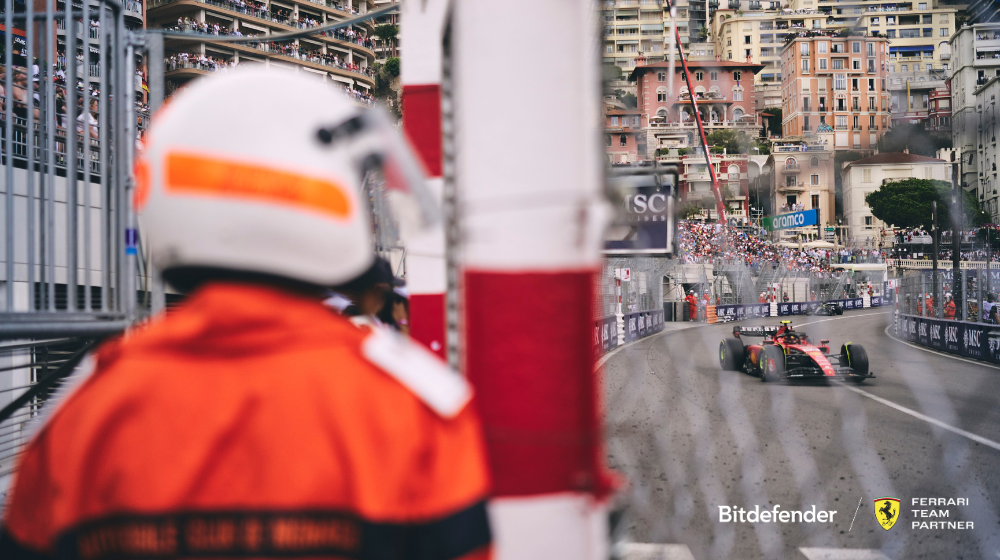The Safety Formula - Episode 6: Hidden Heroes

In our micro-series, The Safety Formula, we explore the worlds of cutting-edge Formula 1 technology and innovations in the ever-evolving world of cybersecurity. Welcome to Episode 6: Hidden Heroes, where we look closer at the efforts of F1 Marshals and Vulnerability Assessment—elements that might not always take center stage but play a crucial role in safety.

Situational Awareness
Formula 1 is a sport characterized by high speeds, tight corners, and intense competition. As drivers push to the limit, lunging to overtake and fighting for every position, it’s almost certain that over the course of a season, a car will veer off the track.
When a car does go off course, it is the F1 Marshals who are the first responders, springing into action in their unmistakable orange overalls. Marshals have several roles to fill, focusing on ensuring competitors and spectators are kept safe.
Marshals act as fire wardens, help to remove stranded cars from the track, wave flags to inform drivers of track conditions, and help clear debris. Without marshals, there could be no motorsport, and their vigilance helps to ensure the safe running of a race.

Vigilance Behind the Scenes
In the realm of cybersecurity, Vulnerability Assessment stands as the digital equivalent of Formula 1's Marshals, safeguarding organizations from potential threats.
On any device, hackers may try to gain access. Vulnerability Assessment will scan your network, identifying and informing you about any vulnerabilities found in connected devices or network equipment that could lead to unauthorized access, data theft, or malicious attacks.
While marshals keep a watchful eye on the race track, vulnerability assessment automatically scans computer systems, networks, and connected devices. Proactively detecting and addressing potential risks ensures the safety and security of the race track and digital environment.

A Rapid Response
Both Formula 1 Marshals and Vulnerability Assessment operate in fast-paced environments where quick response times are crucial to mitigate risk.
On the race track, Marshals are trained to react swiftly to incidents, whether an accident or debris on the track. Their ability to assess the situation promptly and take decisive action can make all the difference in preventing further harm.
Similarly, Vulnerability Assessment in the cybersecurity realm must exhibit swift responsiveness.
It identifies breaches, defends digital assets, and minimizes damage. Rapid action protects sensitive data, prevents unauthorized access, and fortifies an organization's security, reducing the potential for damage.

Although their efforts may not always be the center of attention, Marshals and Vulnerability Assessment are indispensable to the smooth operation of their respective domains. They work tirelessly in the background to contribute to the success and safety of motorsport and digital systems.
💡 Formula 1 Marshal Flags
Marshals act as intermediaries, enabling FIA Race Control to communicate track conditions to drivers via flags.
🟢 Green Flag: The track is clear—often waved at the back of the grid before the race begins.
🔵 Blue Flag: Used to inform a driver that there is another car behind and they need to make way—for example, when being lapped.
🔴🟡 Red and Yellow Flag: Reduced grip in a specific sector of the track—typically due to something on the track that makes it slippery.
⚪ White Flag: Slow-moving car on the track—cautioning other drivers to be aware.
🟡 Yellow Flag: Danger or an incident on the track, requiring drivers to slow down and proceed with caution.
🔴 Red Flag: Used to stop the race entirely—signals that drivers need to return to the pit lane.
tags
Author

The meaning of Bitdefender’s mascot, the Dacian Draco, a symbol that depicts a mythical animal with a wolf’s head and a dragon’s body, is “to watch” and to “guard with a sharp eye.”
View all postsRight now Top posts
How to Protect Your WhatsApp from Hackers and Scammers – 8 Key Settings and Best Practices
April 03, 2025
Outpacing Cyberthreats: Bitdefender Together with Scuderia Ferrari HP in 2025
March 12, 2025
Streamjacking Scams On YouTube Leverage CS2 Pro Player Championships to Defraud Gamers
February 20, 2025
How to Identify and Protect Yourself from Gaming Laptop Scams
February 11, 2025
FOLLOW US ON SOCIAL MEDIA
You might also like
Bookmarks






